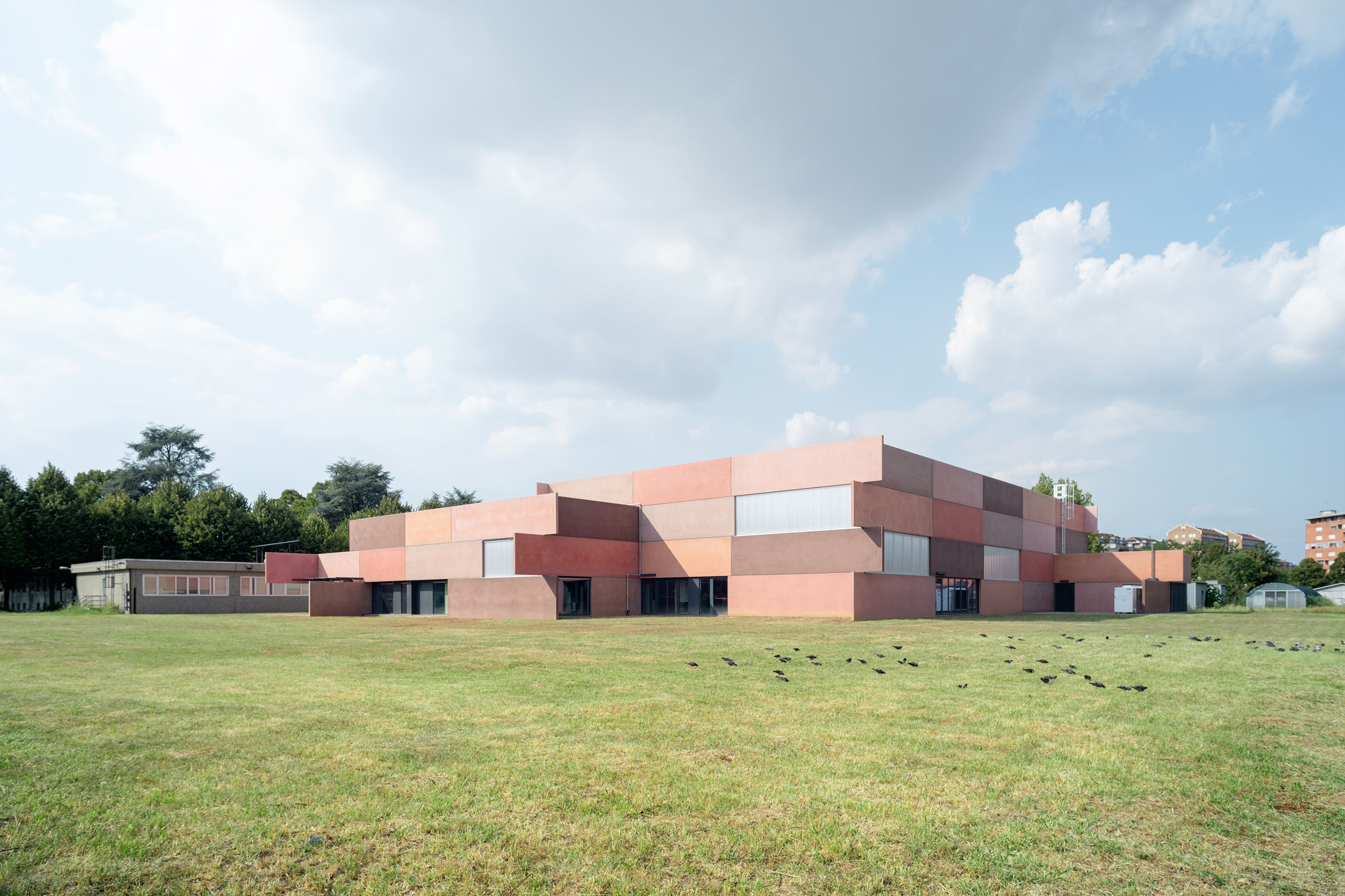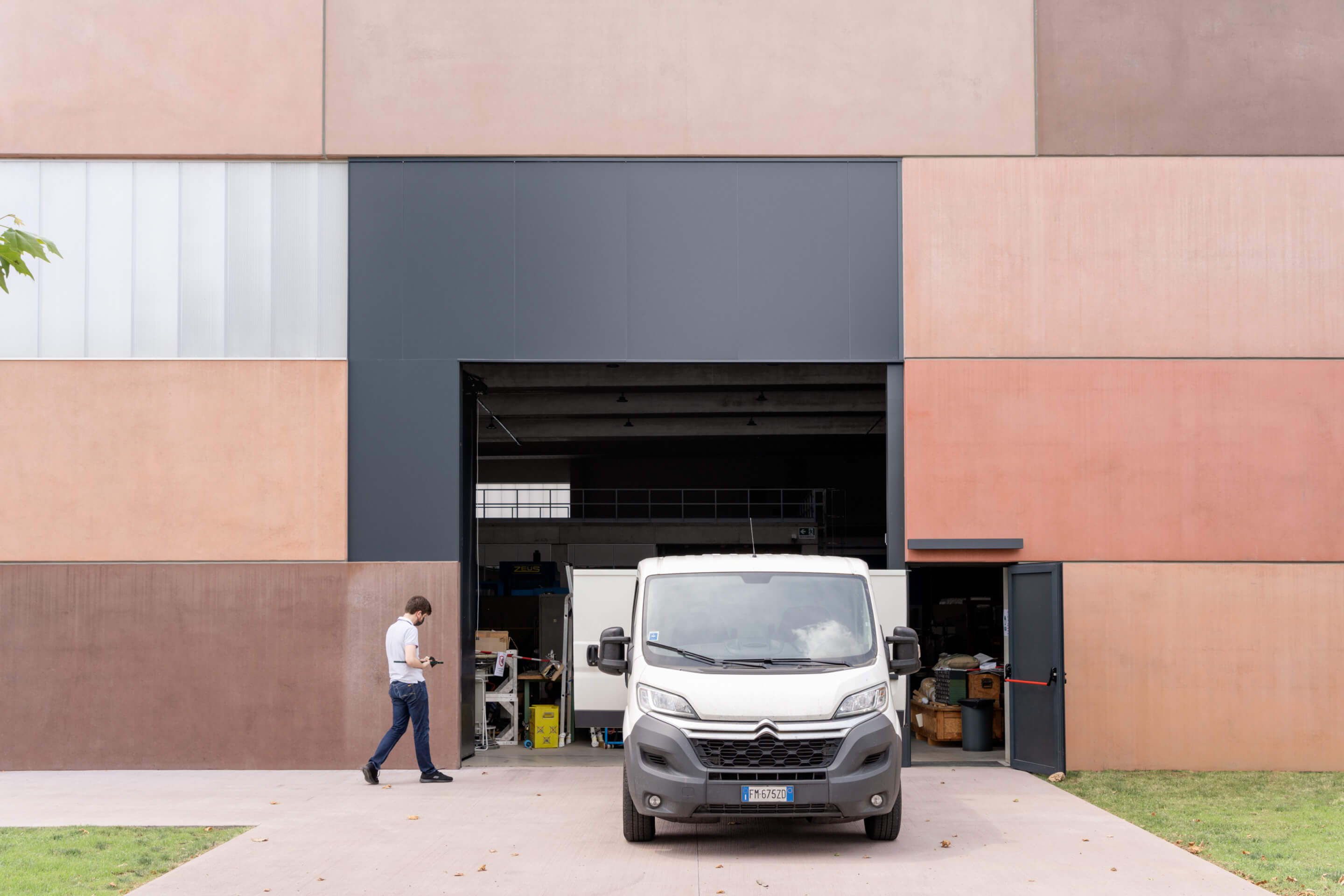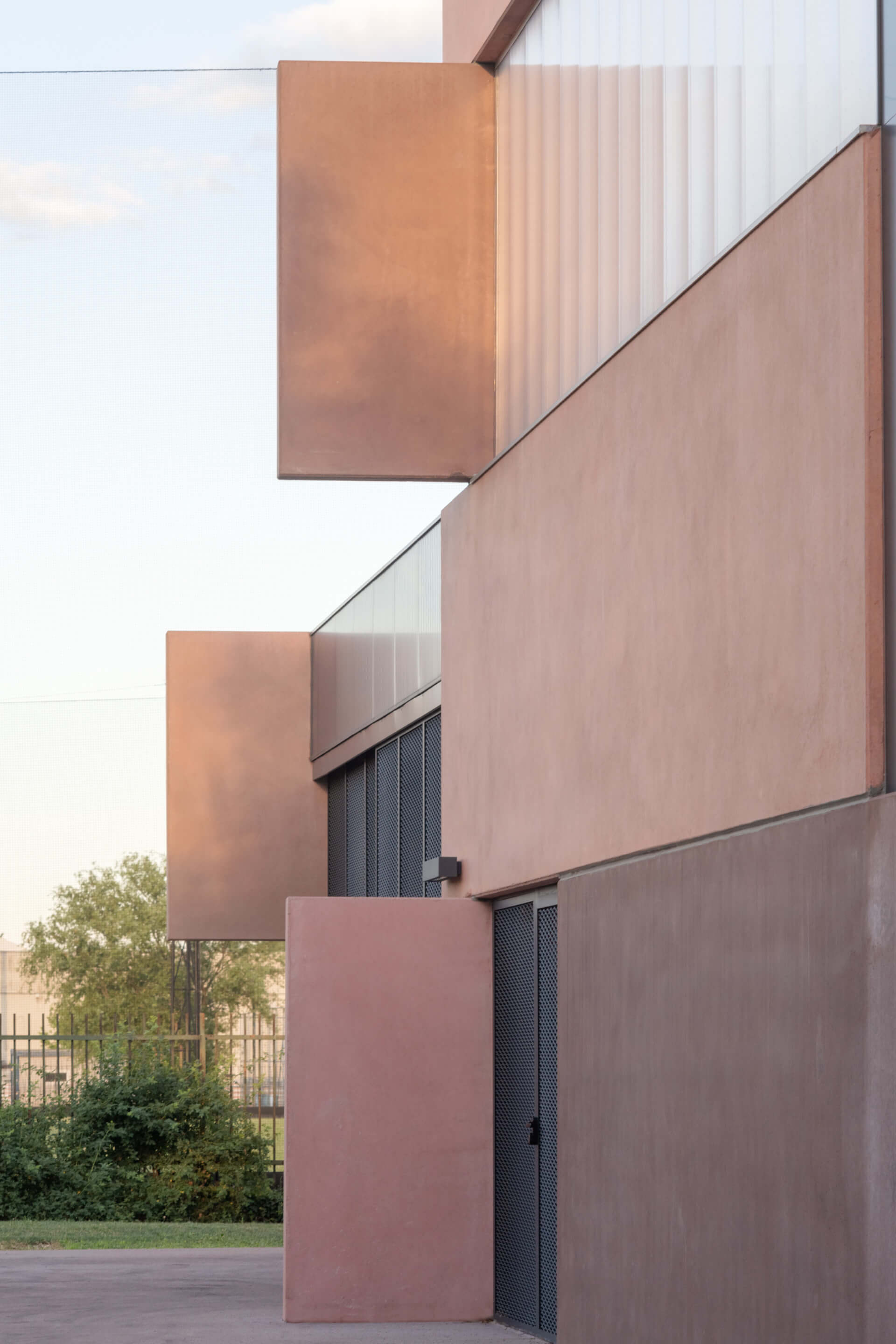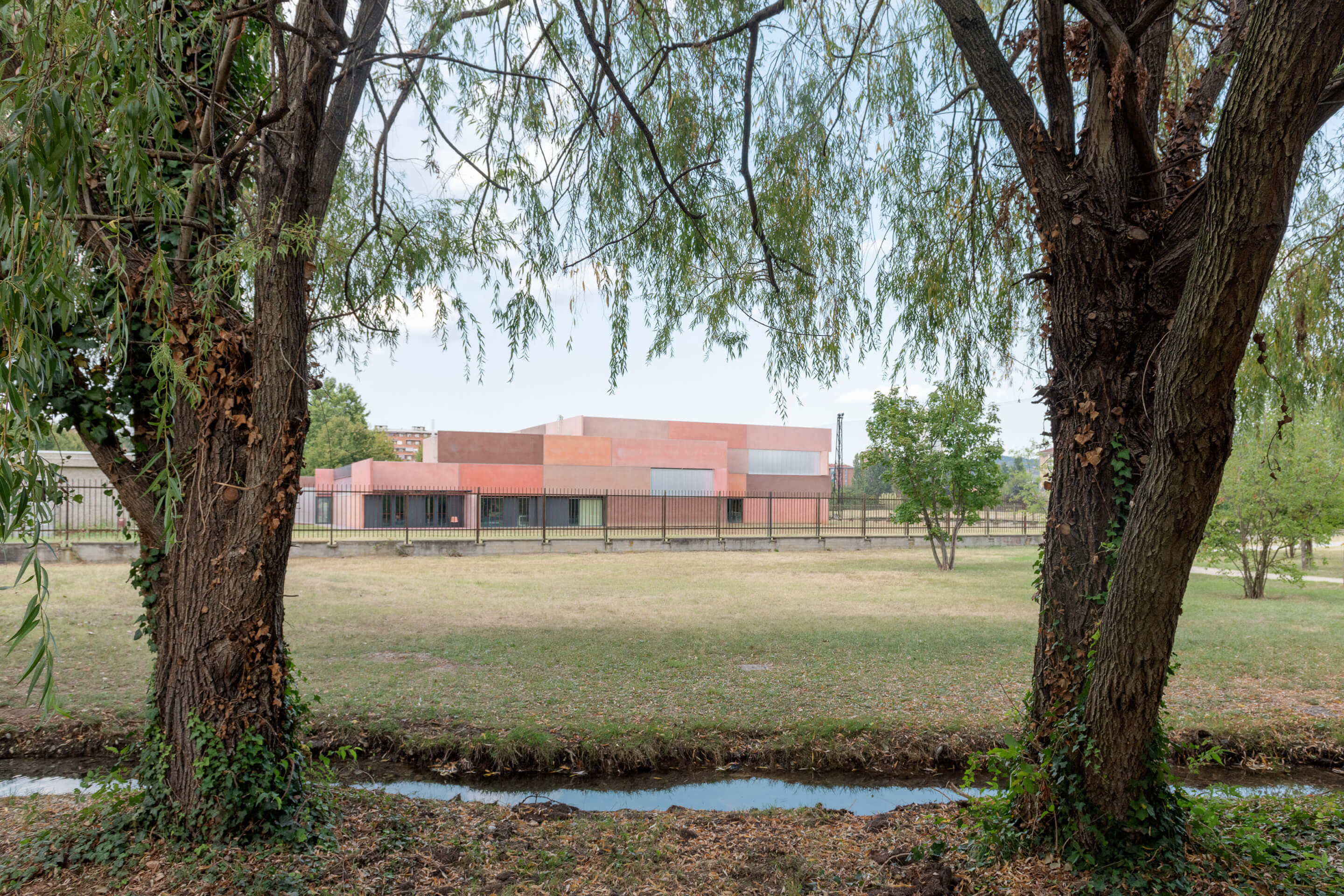
- Architect
ELASTICOFarm - Location
Turin, Italy - Completion Date
2020 - Structural Engineer
Arching Srl - Mechanical Engineer
Projema Engineering Srl - Construction Company
Ruscalla Renato SpA - Prefabricator
Alciati Srl - Installations
Paolin Impianti Srl
Using prefabricated concrete panels, Italian studio ELASTICOFarm was able to embed hidden messages on the facade of S-LAB at the Istituto Nazionale di Fisica Nucleare in Turin, Italy. Deviating from the traditional industrial warehouse for a semi-industrial research building, S-LAB accommodates the machinery required by the lab’s experimentation while also containing offices, changing rooms, a canteen, and a large workshop. Built as an addition to a pre-existing office building, ELASTICOFarm sought to design a structure “with strong symbolic value,” given the importance of the nuclear fission research it is home to.
Working on a limited budget but not wanting to design a typical industrial building, prefabricated concrete panels from Alciati Srl were chosen for cost efficiency and durability. Drawing from its previous work with prefabricated panels, ELASTICOFarm was able to guard against unprecedented cost increases and any major changes that could come about during the construction process.

The facade is defined by its coloration and stacking of concrete panels, with panels protruding from the building’s corners. The rectangular prefabricated panels have the appearance of being stacked on top of each other, as each panel was uniquely colored with varying intensities of red and brown. ELASTICOFarm co-founder Stefano Pujatti explained that they wanted the panels to reflect colors of the earth, “blurring the solid volume to softly connect it to the landscape.”
The panels were fabricated in a factory that incorporated iron oxides into the concrete mix, creating a unique palette for a material that is typical for industrial buildings.

The other unique feature of the facade is its ability to “conceal” messages within the concrete. Pujatti said that due to the thickness of panels and thermal bridging, humidity can create dust deposits over time that produce patterns through staining on a facade. While this is avoidable on newer buildings, S-LAB’s facade anticipates this property in particular sections to eventually reveal the name of the institute. Once humidity exceeds a certain level, the letters will begin to appear like a “ghost,” eventually leaving a readable trace on the facade once enough of the deposit builds up.

Creating an image for the institute that is not solely industrial, the building acts as a buffer between the city’s Mirafiori District and the Sangone River. S-LAB’s facade is expected to age uniquely while not being too overt in its messaging, with the red and brown hue of the panels breaking up the monolithic mass of the facade and softening the building’s profile.

